Nextcloud is an open-source platform for file synchronization and file sharing. Rather than relying on third party cloud providers, users or organizations can create their own servers and store data such as documents, images, videos etc.
Here is a step-by-step guide to installing the Nextcloud content collaboration platform on your cloud server from Kamatera.
First, let’s create an account on the Kamatera console.
Go to console.kamatera.com and sign up for an account by providing the following information:
- Verify Your Email: Click the verification link sent to your email by Kamatera.
- Password: Enter your password.
- Repeat Password: Re-enter your password and click Create Account.
Then, we’ll access the Kamatera management console.
Enter your username and password and click Login to access the console.
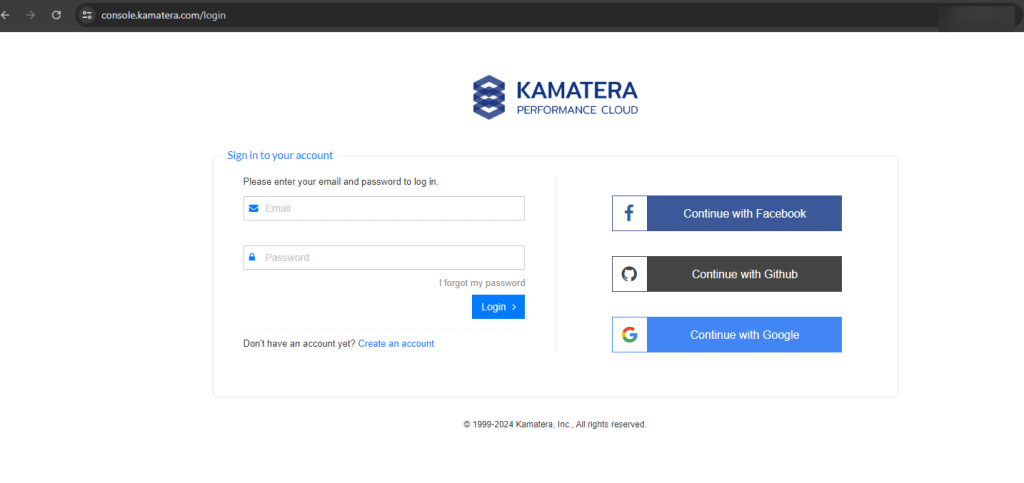
-
- Navigate to My Cloud on left hand side, select Servers and click on Create New Server.
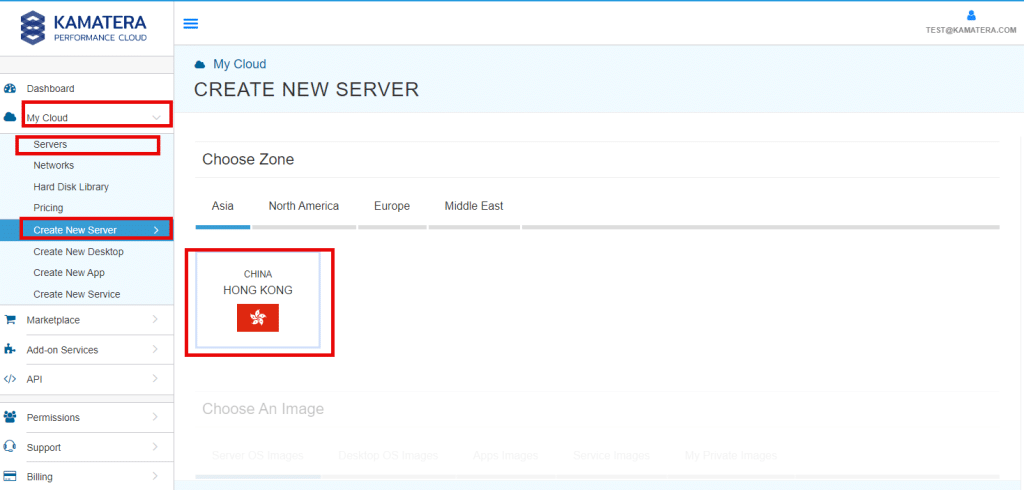
- Navigate to My Cloud on left hand side, select Servers and click on Create New Server.
- Choose Zone
Choose the zone, according to your requirements.
- Asia
- North America
- Europe
- Middle East
Note: For this setup, we used the Asia server domain to set up a Windows server.
- Choose An Image
Kamatera offers a variety of app and server images to help you set up preconfigured resources. You can explore options such as:
- Server OS Images
- Desktop OS Images
- App Images
- Service Images
- My Private Images
For our purposes, select App Images and select Nextcloud.
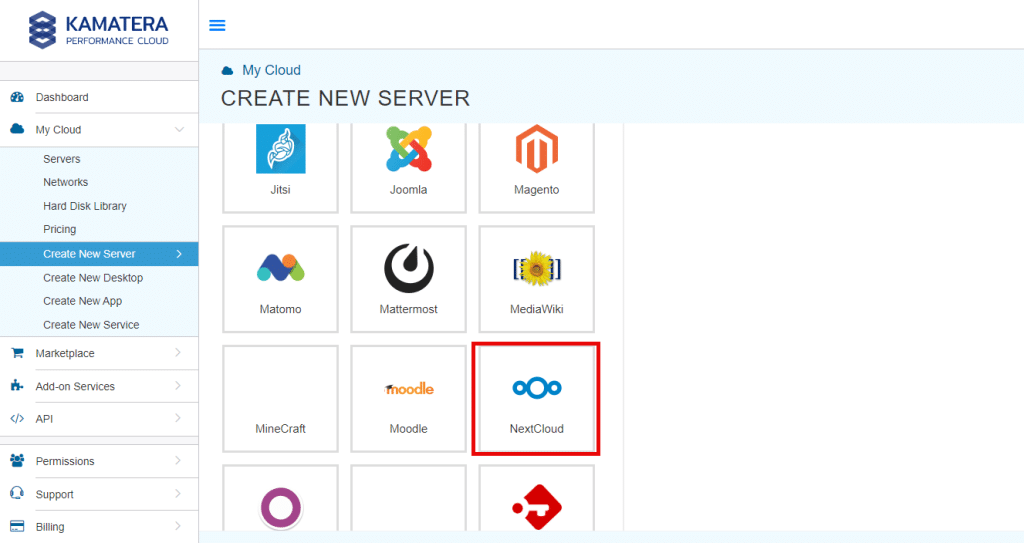
- Choose the latest version of Nextcloud.
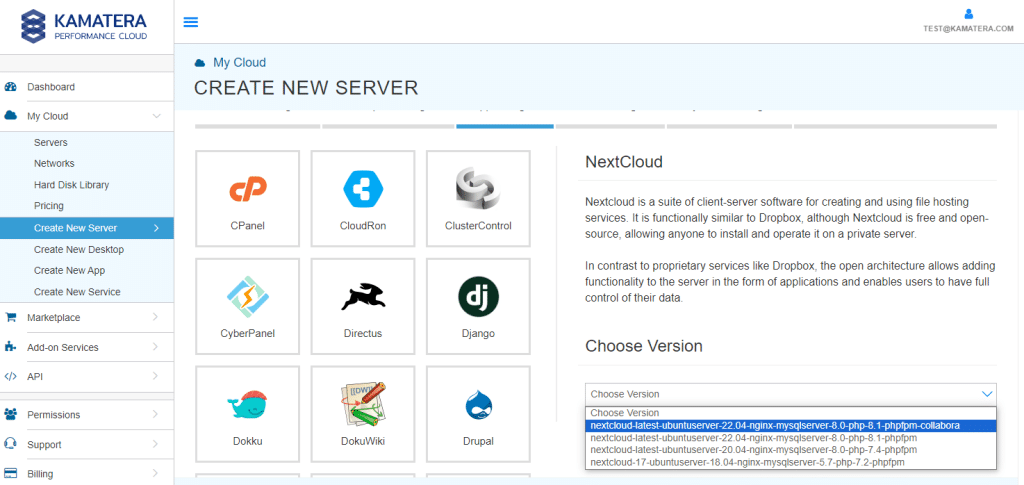
- Toggle the Detailed view button to enable you to view the detailed description, including the price.
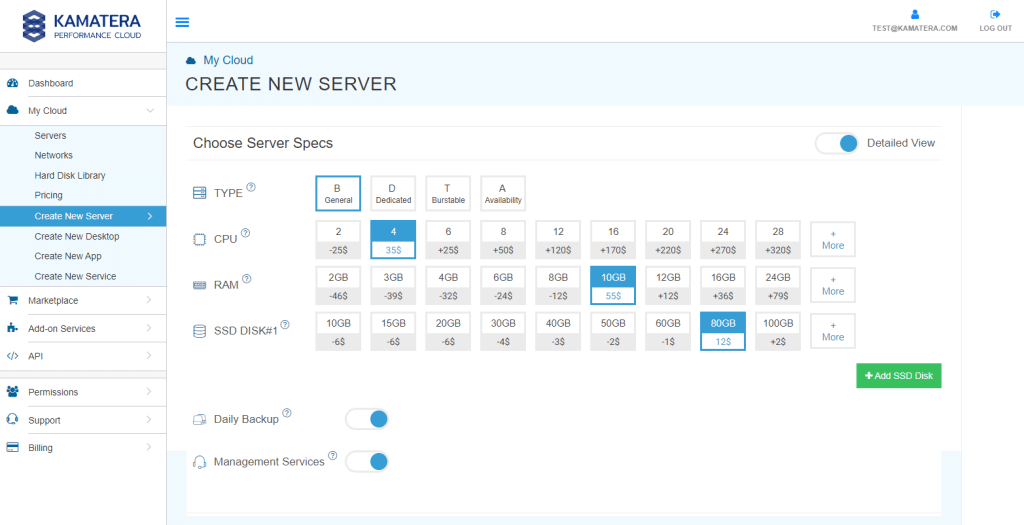
Choose server specs:
| Field | Description |
| Type | Type B-General Purpose– Server CPU are assigned to a dedicated physical CPU thread with reserved resources guaranteed.
Type D–Dedicated – –Server CPU are assigned to a dedicated physical CPU Core (2 threads) with reserved resources guaranteed. Type T – Burst – Server CPU are assigned to a dedicated physical CPU thread with reserved resources guaranteed. Exceeding an average usage of 10% will be extra charged for CPUs usage consumption. Type A-Availability- Server CPUs are assigned to a non-dedicated physical CPU thread with no resources guaranteed. Note: More information on CPU types is available on the My Cloud- Pricing page. |
| CPU | Choose the number of vCPUs that will be installed on the server. Type B/T can be configured with up to 104 vCPUs per server, based on Intel’s latest Xeon Processors, 2.7 GHz+. |
| RAM | Choose the amount of RAM that will be installed on the server. Type B/T/D can be configured with up to 512GB RAM per server. |
| NVMe SSD DISK | Choose NVMe SSD Storage Size. You can add upto 15 NVMe SSD Disk. NVMe SSD Storage includes unlimited IOPS and unlimited storage bandwidth, free of charge. |
| Daily Backup | Toggle the switch to enable extended daily backups of your server’s storage to external backup storage. |
| Management Services | Toggle the switch to enable Management Services to the server’s operating system by Kamatera’s technical support team. |
- Choose Networking
You can select the network you wish to use, whether it’s a public Internet network or a private local network.
Simple Mode:

| Field | Description |
| Public Internet Network | Check to connect the server to a network interface connected to Public Internet Network. |
| Private Local Network | Check to connect the server to a network interface connected to Private Local Network. |
Advanced Mode:

| Field | Description |
| NIC #1 | Select WAN from the options available in the drop-down menu.
Select auto from the options available in the drop-down menu.
Select auto from the options available in the drop-down menu.
|
| WAN Traffic | Select 5000 GB per month/ on 10 Gbit per second port. |
- Advanced Configuration
Hide – If you want to hide the advanced configuration.
Show – If you want to see the advanced configuration.
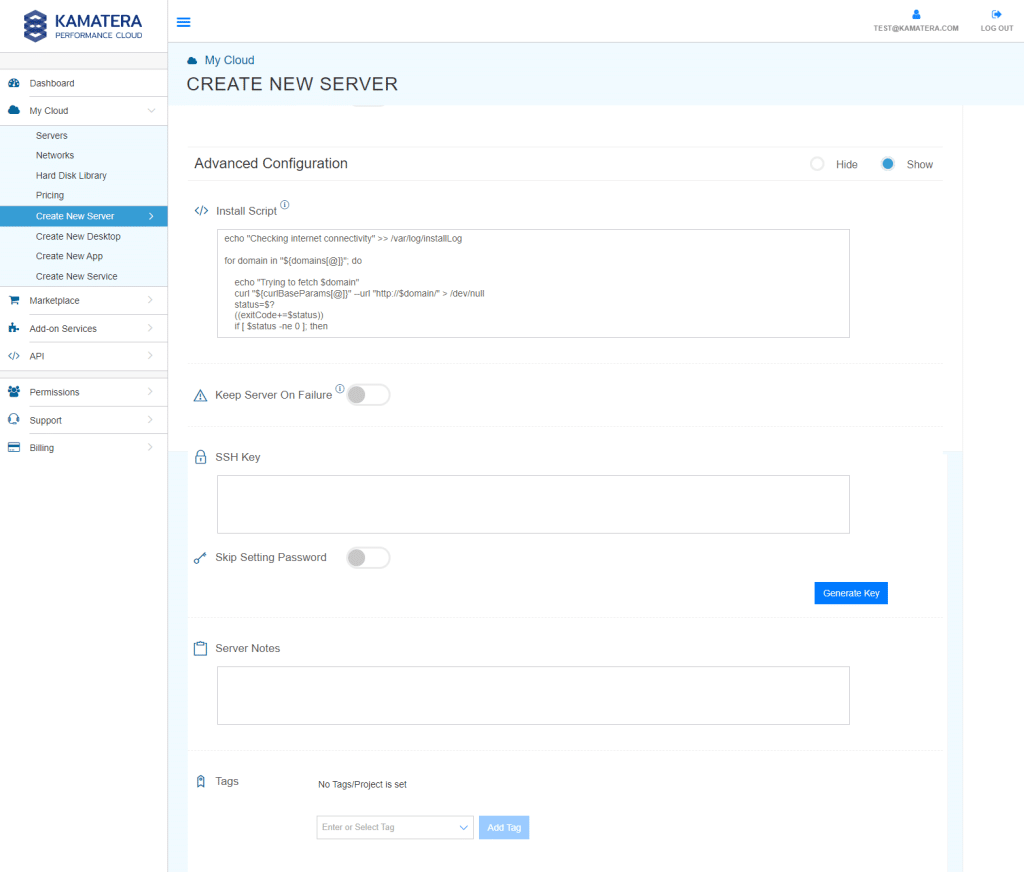
| Field | Description |
| Install Script | Enter the script here to execute once the server is created.
Note: For Windows system use Power Shell. |
| Keep Server On Failure | Do not terminate server if Start up Script or Provisioning Fails |
| Server Notes | Enter any server notes to be noted. |
| Tags | Select the Tags from the drop-down menu and click Add. |
- Finalize Settings
Finalize settings by setting the password, re-validating it, selecting the number of servers, specifying the server name, and enabling the Power On Servers option.
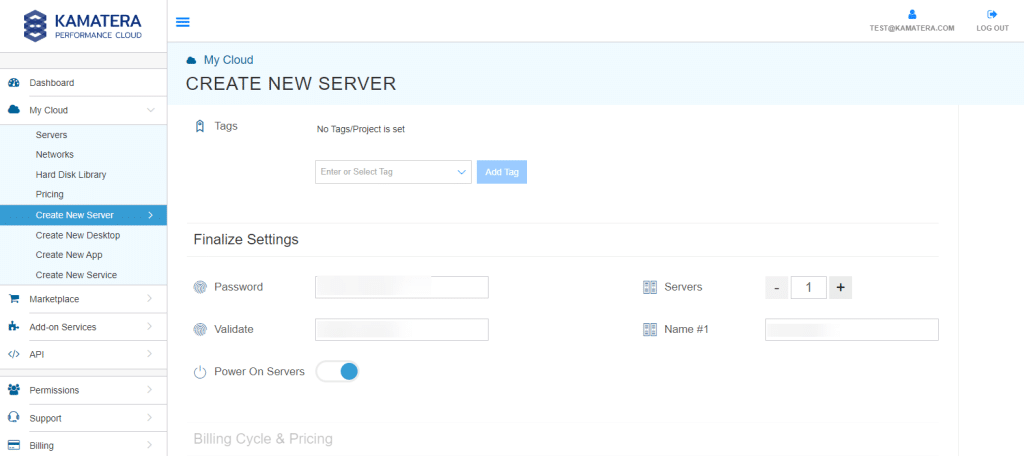
| Field | Description |
| Password | Select password
Password allowed characters: a-z, A-Z,0-9 !@#$^&*()~ and must meet the following requirements:
|
| Validate | Re-enter the password to validate. |
| Servers | Select the number of servers you want. |
| Name # 1 | Enter the name of the server. |
| Power On Servers | Switch on the toggle button to see the details |
Note: Once you enter your details in Finalize Settings, you can select either the Monthly Billing Cycle or Hourly Billing, depending on your requirements.
- Billing Cycle and Pricing
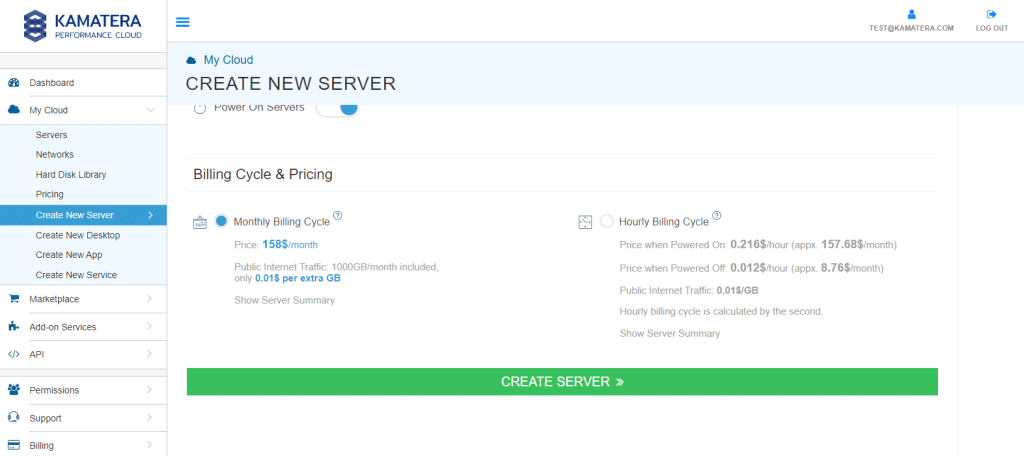
You can choose between the Monthly Billing Cycle and Hourly Billing Cycle.
Note: The Server Summary displays the location, operating system (including server specifications), add-on services, servers, and pricing.
Click Create Server.
- In Tasks Queue, you can see the Nextcloud server is downloading.
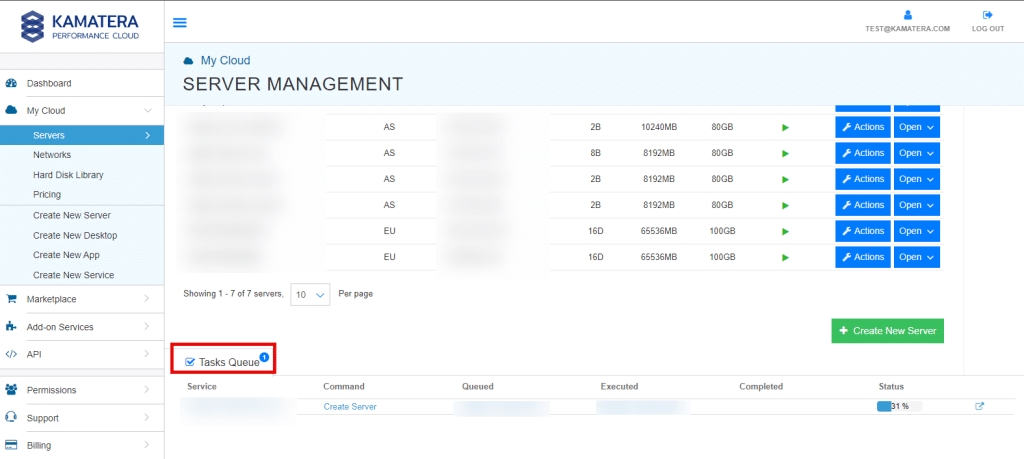
Now, you can see the installation is complete.
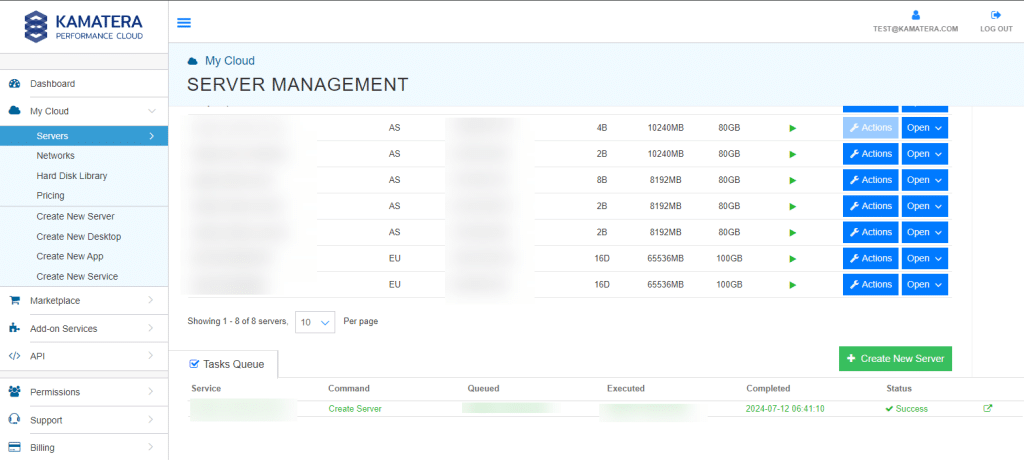
- Nextcloud server is reflected in Server Management dashboard.
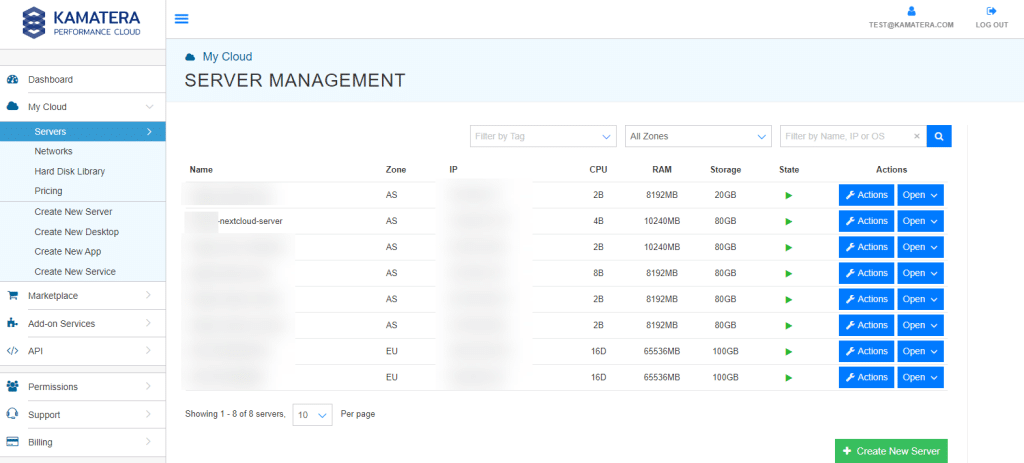
Click on Connect, and then click on Open Remote Console.
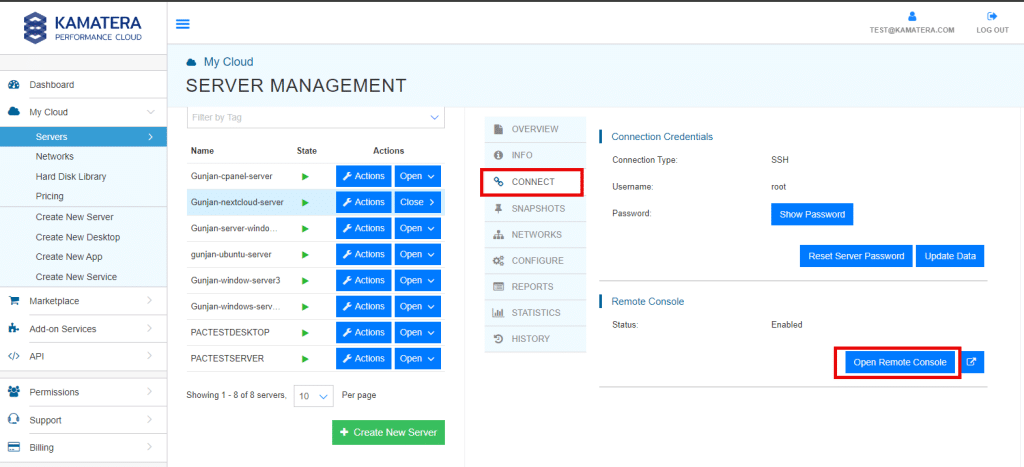
- A new tab opens connecting to the new server. Login with username and password.
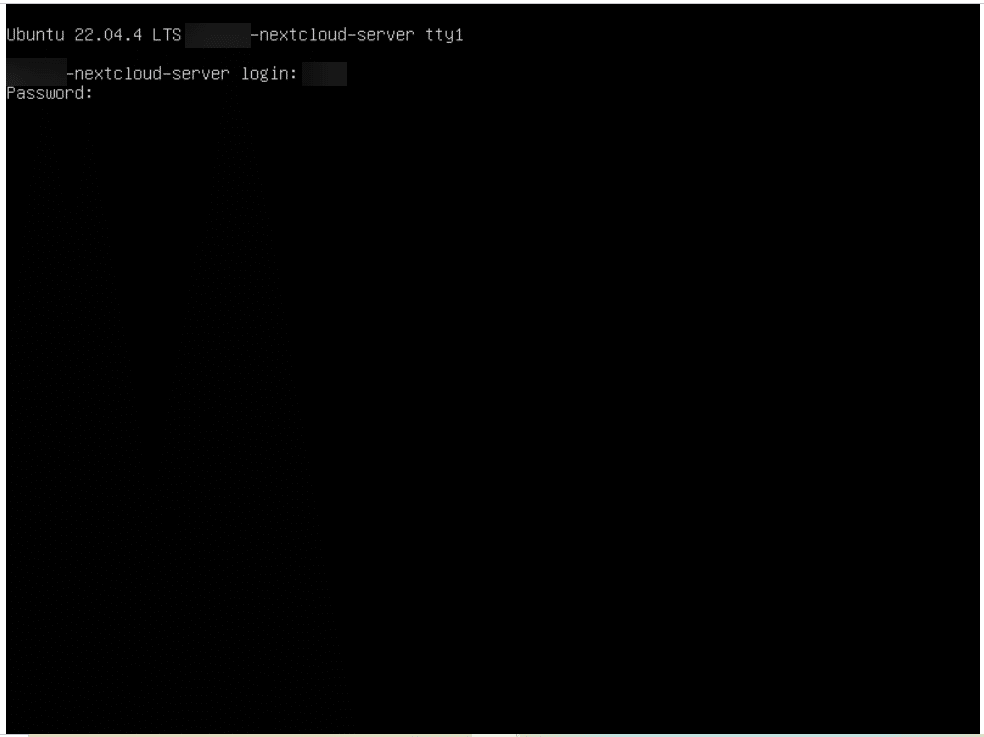
- It will show you all the details of mysql IPaddress, username, password; nextcloud webUI IP address, username, password; PHP config files location; SSL certificates location; NGiNX IP address; and your NGiNX config files location.
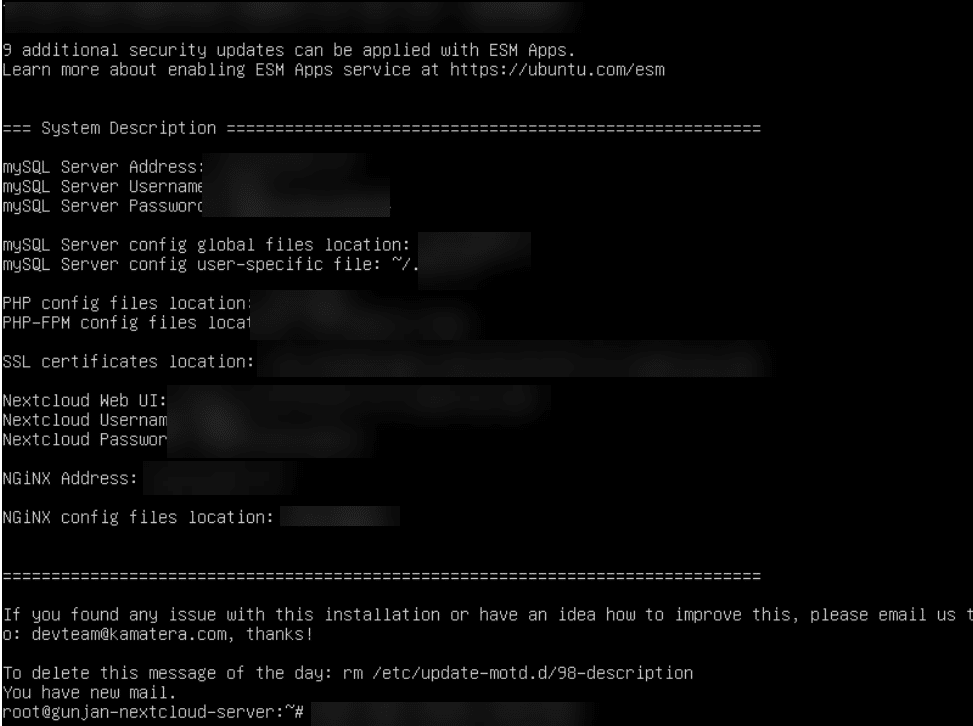
- Open web browser and enter the below URL
URL: https://nextcloud-ip-address.example.com/
Note: Replace ‘nextcloud-IP-address’ with actual IP address of your Nextcloud Web UI given on the screen.
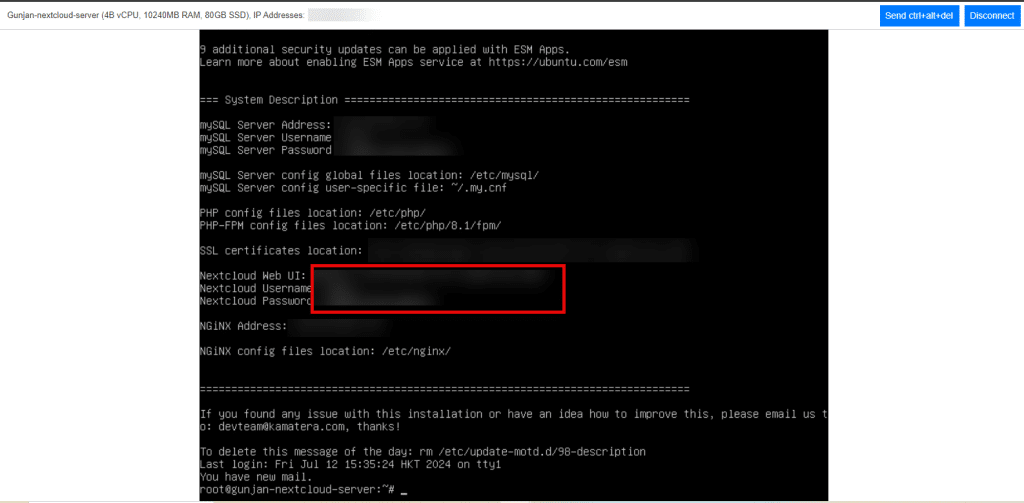
Login with the username and password given on the screen, Nextcloud Username and Nextcloud Password.
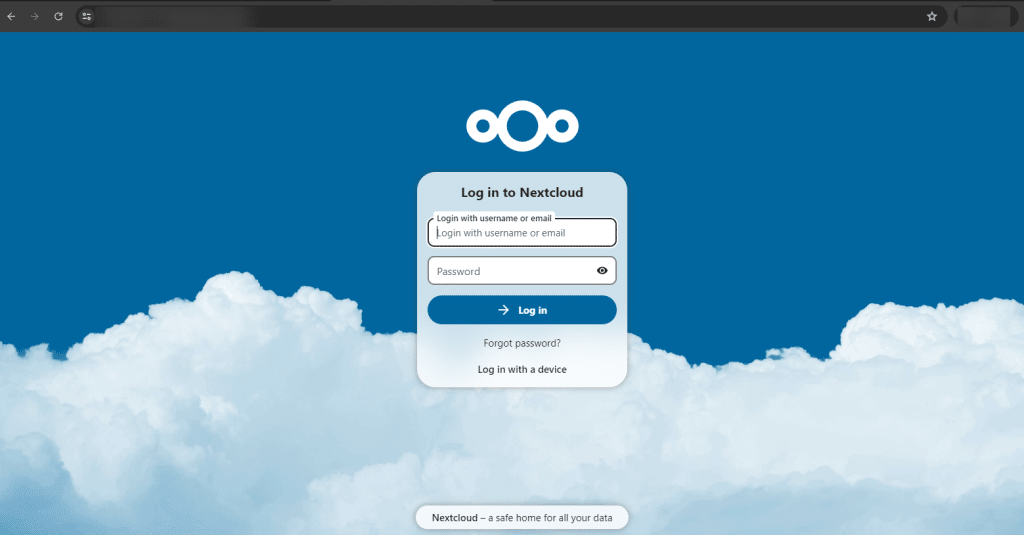
Congratulations, you have successfully deployed Nextcloud on your Kamatera server. Now, you can start exploring all the features and capabilities of Nextcloud.
